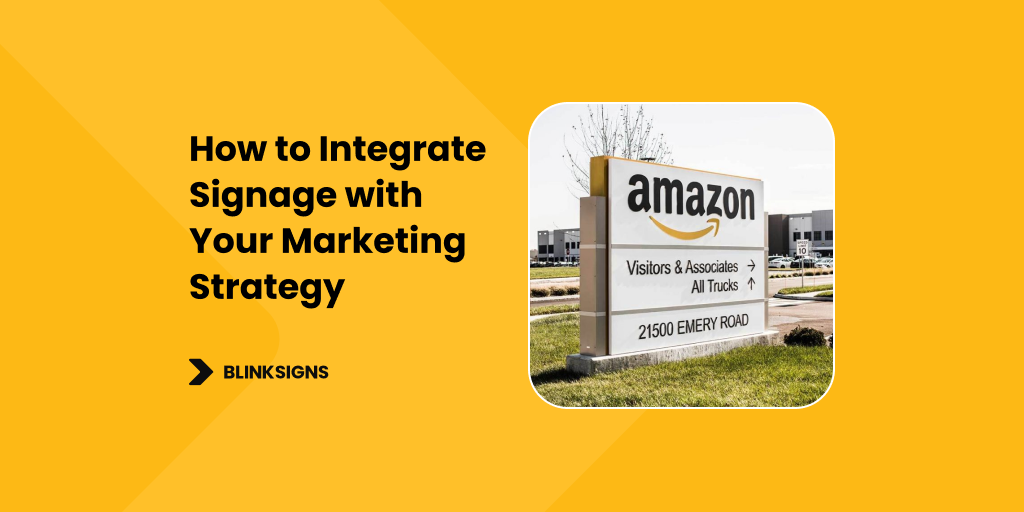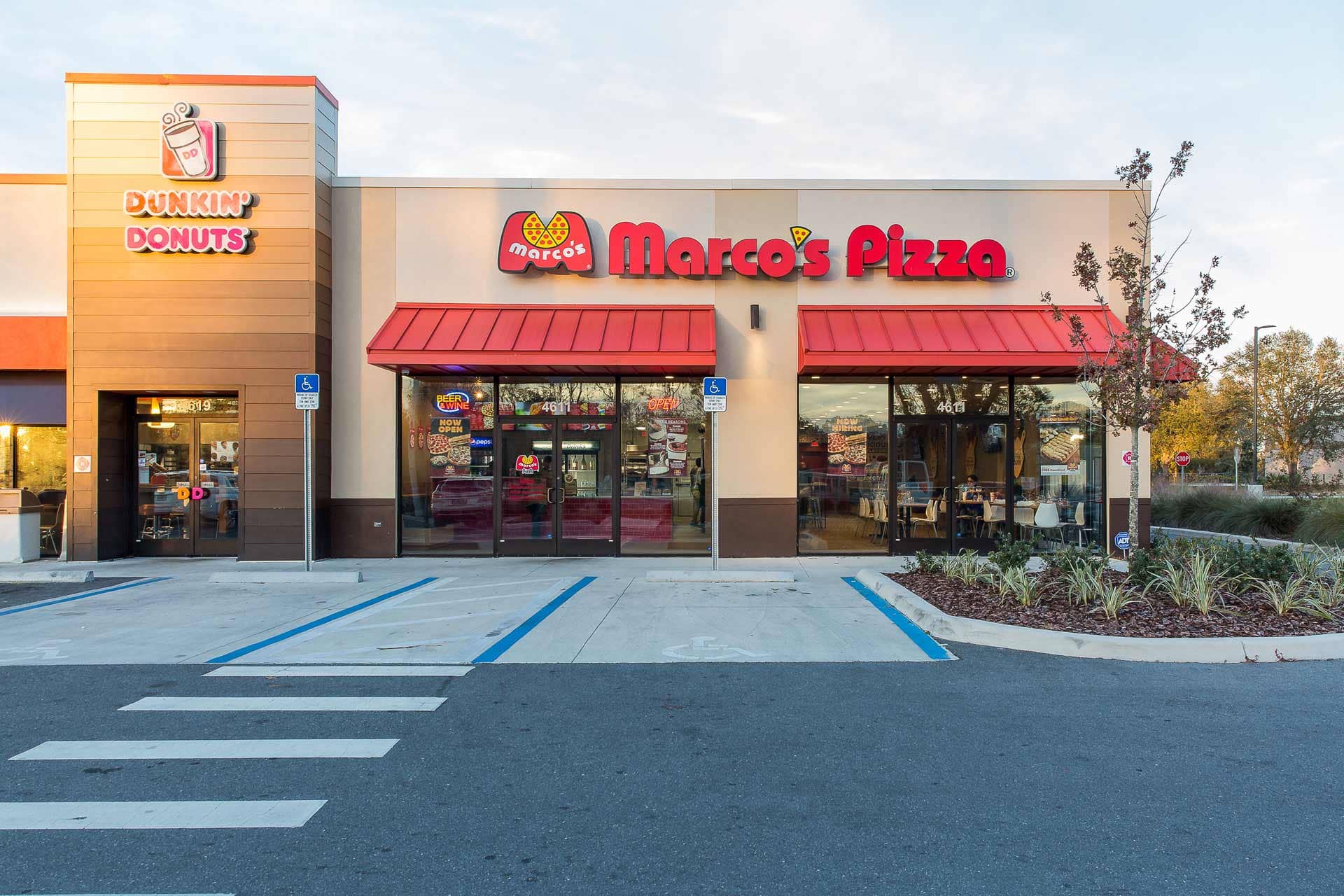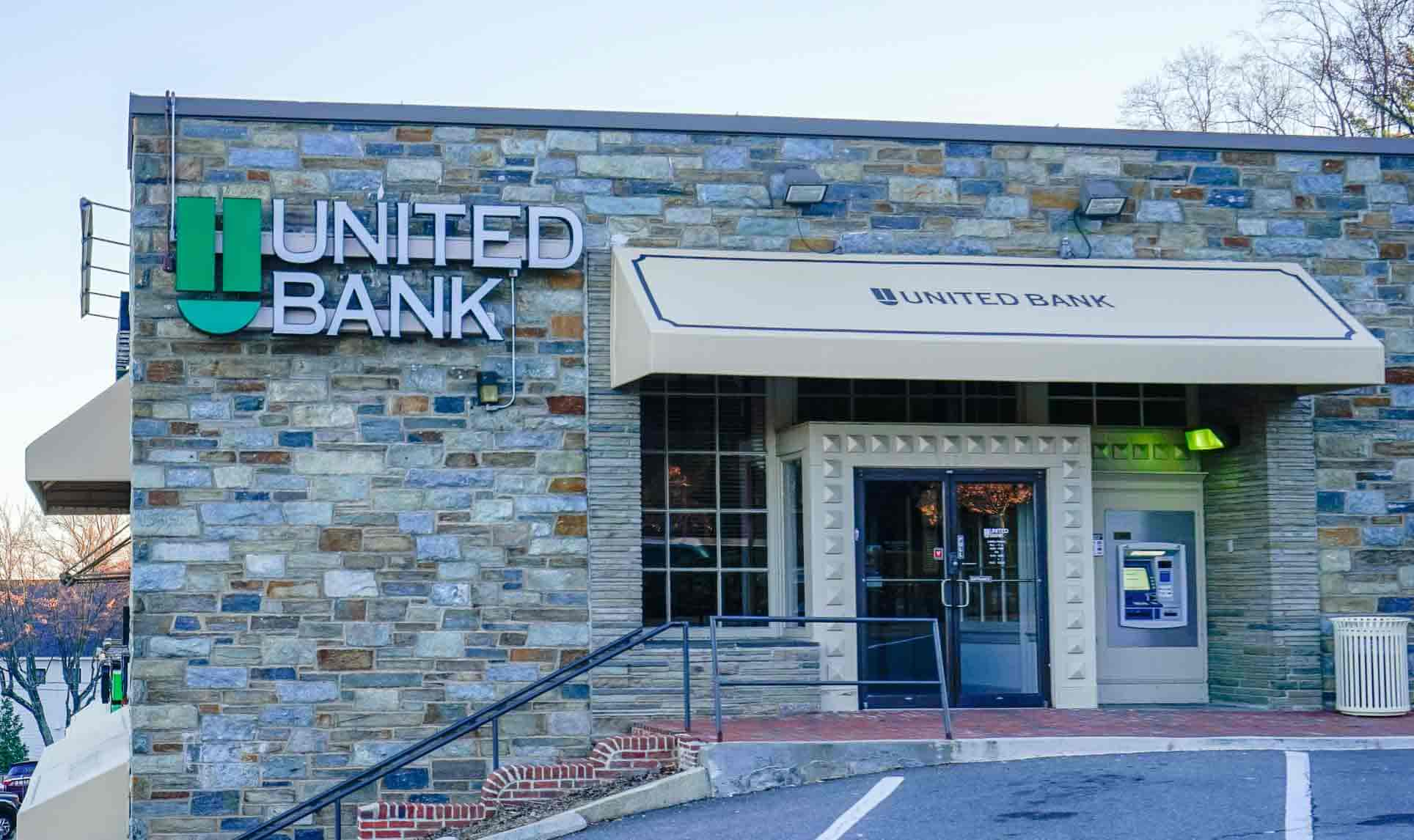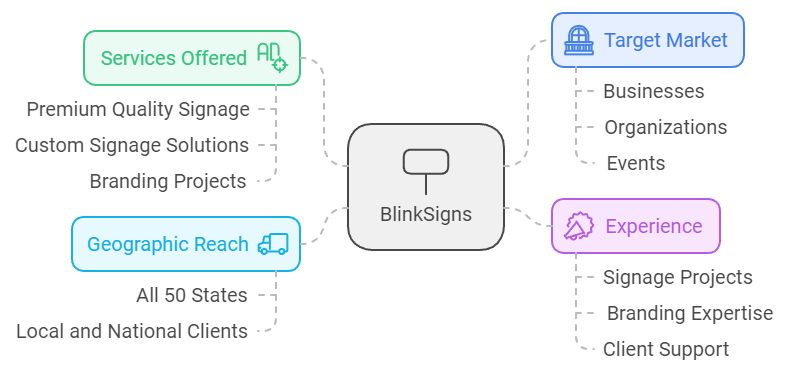
How to Integrate Signage with Your Marketing Strategy
To integrate signage into our marketing strategy, we begin by comprehending our brand identity. We guarantee our signs consistently mirror our core values and utilize aligned visuals, colors, and fonts.
We select the appropriate types of signage based on audience analysis and location specifics; digital options can enhance engagement. Attention-grabbing designs with strong typography and contrasting colors maximize impact.
At Blinksigs, we position signs strategically in high-traffic areas and at eye level for visibility. Lastly, we measure effectiveness using analytics, making adjustments as necessary. Are you curious about the complete formula for seamless integration? Let’s delve further into how each step interconnects.
Understand Your Brand Identity
Before creating effective signage, we need to deeply understand our brand identity and what it represents. Our brand messaging should be clear and consistent, reflecting our core values and mission.
Visual consistency is essential; our colors, fonts, and logos must align across all marketing materials to reinforce our identity. When customers see our signage, it should influence their perception positively, helping to establish trust and recognition.
Competitive differentiation is another crucial aspect. Our signage should highlight what sets us apart from others in the market, making us memorable.
Marketing alignment ensures that our signage supports and enhances our broader marketing strategy. By integrating these elements, we guarantee that our signage effectively communicates who we are and what we offer.

2320 lofts
Choose the Right Signage Types
We must understand our audience and what appeals to them to select the proper signage types.
We should also consider the specifics of each location to guarantee maximum visibility.
Understand Your Audience
Understanding your audience is frequently the cornerstone of choosing suitable signage that will genuinely resonate and drive engagement. We must explore our customer personas and conduct a thorough demographic analysis to identify our target market. By examining consumer behavior and performing audience segmentation, we can tailor our signage to meet their needs and preferences.
Here are some steps we can take:
- Develop detailed customer personas to understand who our customers are.
- Perform demographic analysis to gather critical data, such as age, gender, and income.
- Analyze consumer behavior to see what types of signage drive engagement.
- Segment our audience to create targeted, effective signage strategies.
Consider Location Specifics
Choosing suitable signage for specific locations is vital to maximizing their impact and effectiveness. First, we need to conduct a thorough location analysis. By understanding the area’s target demographics, we can tailor our signage to resonate with the local audience. Additionally, analyzing traffic patterns helps us determine the best placement for visibility.
Conducting a competitor analysis is also essential; we can identify gaps and opportunities where our signage can stand out. Furthermore, we must consider local regulations to ensure our signs comply with all legal requirements.
Leverage Digital Options
By embracing digital signage, we can dynamically engage our audience and adapt our messages in real time. Digital options offer several advantages over traditional signage, allowing us to integrate various marketing channels seamlessly.
- Interactive displays allow customers to engage directly with the content, creating a memorable experience.
- Social media: We can display live feeds to keep our audience updated and connected.
- Mobile integration: We create a cohesive and interactive user experience by syncing digital signage with mobile apps.
- Email campaigns: Using data from email campaigns, we can effectively tailor our digital signage content to target specific audiences through geo-targeting strategies.
Leveraging these digital options helps us stay relevant and responsive, maximizing our marketing impact.
Design for Maximum Impact

Macros Pizza Exterior Sign
When we design our signage, we need to focus on eye-catching visual elements and guarantee our branding colors are consistent.
This approach not only grabs attention but also reinforces our brand identity.
Let’s explore how these elements can work together for maximum impact.
Eye-catching Visual Elements
Bold hues and high-contrast designs seize attention and make your signage stand out in any setting. We should focus on graphic design principles and visual merchandising techniques to craft eye-catching visual elements.
Here are some attention-grabbing techniques we can utilize:
- Bold Typography: Large, clear fonts guarantee readability from a distance.
- High-Quality Images: Crisp, relevant visuals boost brand recognition.
- Contrasting Colors: Use colors that pop to make creative displays more enthralling.
- Dynamic Layouts: Experiment with unique shapes and arrangements to attract more eyes.
Integrating these elements into our signage increases visibility and strengthens our brand’s identity. By leveraging these strategies, we ensure that our signage captures attention and effectively communicates our message.
Consistent Branding Colors

United Bank Signage
Consistently using our brand’s colors can significantly enhance the effectiveness of our signage, guaranteeing maximum impact and immediate recognition.
By leveraging color psychology, we tap into the emotional and psychological triggers that our target demographics respond to, reinforcing our brand messaging.
Visual consistency across all marketing materials fosters brand recognition and trust among our audience. When our signage aligns perfectly with our established color palette, it looks professional and strengthens the overall marketing strategy.
Understanding our target demographics allows us to choose colors that resonate deeply with them, making our signage more compelling.
Let’s ensure every element, from logos to background hues, reflects our brand identity, achieving a cohesive and powerful visual presence.
Strategically Place Your Signage
Strategic positioning of your signage guarantees it captures your audience’s attention at the right moment and location. Our first step is to focus on site selection. We need to identify high-traffic areas where our target audience frequents.
Then comes layout placement; ensuring our signs are at eye level increases sign visibility.
Effective viewership targeting means we comprehend where our potential customers will most likely see our message.
Lastly, message clarity is crucial. Keeping the message simple and direct ensures it’s easily grasped.
Consider these tips:
- Entry and Exit Points: Prime spots for maximum visibility.
- Near Point of Sale Areas: Capture attention during the final purchase decision.
- Waiting Zones: Hold customers’ attention while they wait.
- Outdoor Spots: Reach a broader audience.
Measure and Optimize Effectiveness
After strategically placing your signage, it’s time to measure its effectiveness and make necessary optimizations.
First, we need to track analytics to see how our signage performs. Using tools like foot traffic counters, we can monitor foot traffic to understand peak times and visitor engagement.
Next, test designs by rotating different visual elements to see which captures more attention. We should also adjust messaging based on feedback and observed behaviors to guarantee it resonates with our audience.

Blinksigns Solutions
Conclusion
By understanding our brand identity, choosing suitable signage types, designing for maximum impact, and strategically placing our signs, we can seamlessly integrate our signage with our overall marketing strategy.
We’ll attract attention, enhance brand recognition, and drive customer engagement. Let’s leverage every opportunity, measure our effectiveness, and continuously optimize our approach.
With Blinksigns, we’ll reveal the full potential of our marketing efforts and elevate our brand’s visibility and impact in the physical world.
Frequently Asked Questions
How Can Digital Signage Improve Customer Engagement?
We can boost customer engagement with digital signage through interactive displays, personalized content, and targeted messaging. Real-time updates and customer feedback help us connect with our audience, ensuring a dynamic and responsive marketing approach.
What Are Cost-Effective Signage Options for Small Businesses?
We can craft impactful signage using creative designs and affordable materials. Partnering locally and choosing targeted locations boosts visibility. Interactive displays also effectively engage customers, providing cost-effective solutions for small businesses.
Can Signage Be Integrated With Social Media Campaigns?
We can integrate signage with social media by using hashtags and QR codes. This boosts online visibility, enhances brand recognition, and creates targeted advertising. It also opens up cross-promotion opportunities, leveraging both physical and digital domains.
How Does Outdoor Signage Influence Foot Traffic?
Vibrant visuals vastly boost foot traffic by enhancing brand recognition. When we leverage location targeting with clear, concise messages and compelling calls to action, our outdoor signage can create a powerful visual impact that drives customers to our doors.
What Are the Legal Considerations for Installing Signage?
When installing signage, we must navigate permit requirements, zoning restrictions, and visibility regulations. Ensuring safety compliance and considering ADA guidelines are essential for legal and accessible signage, helping us avoid fines and maximize public reach.